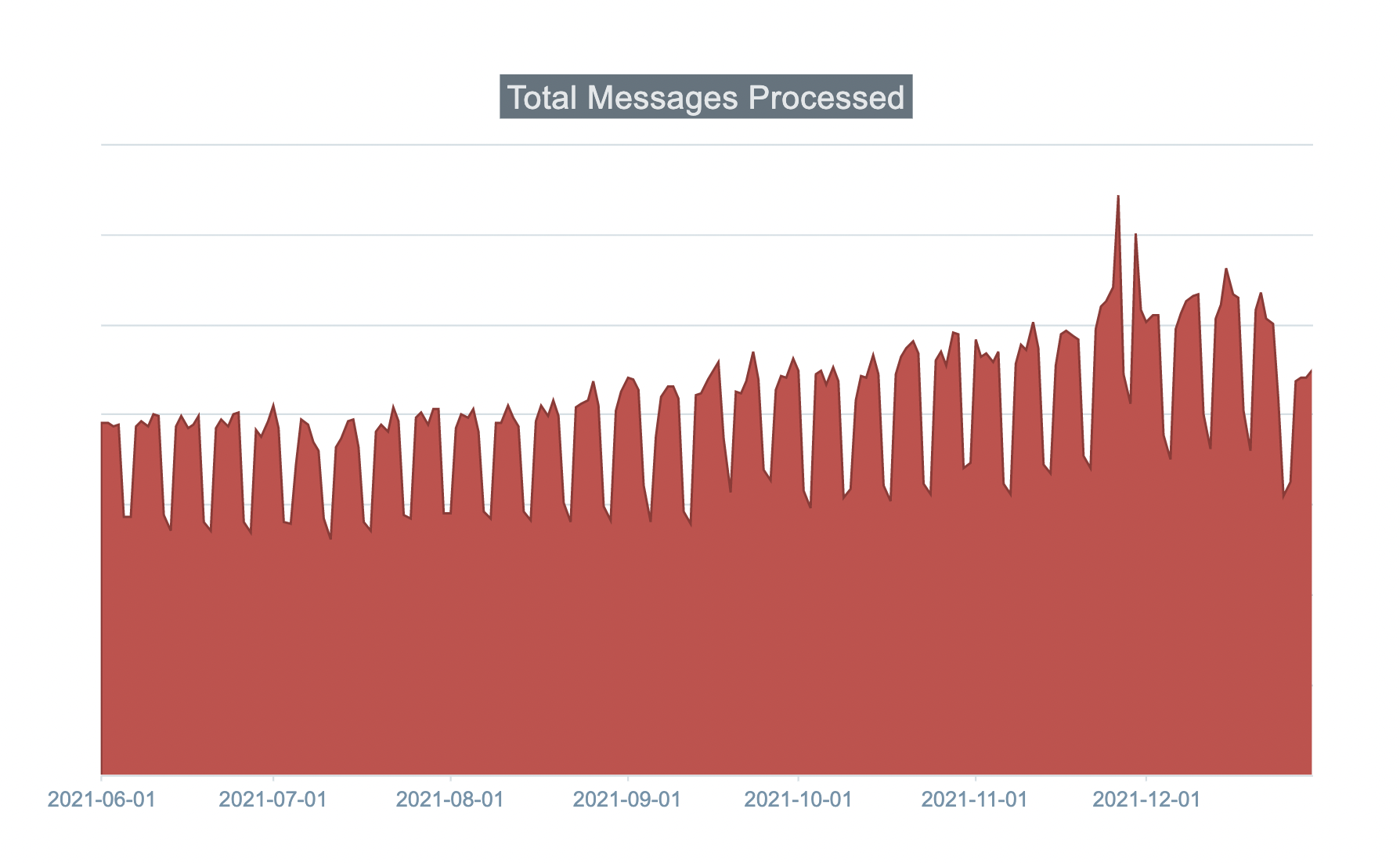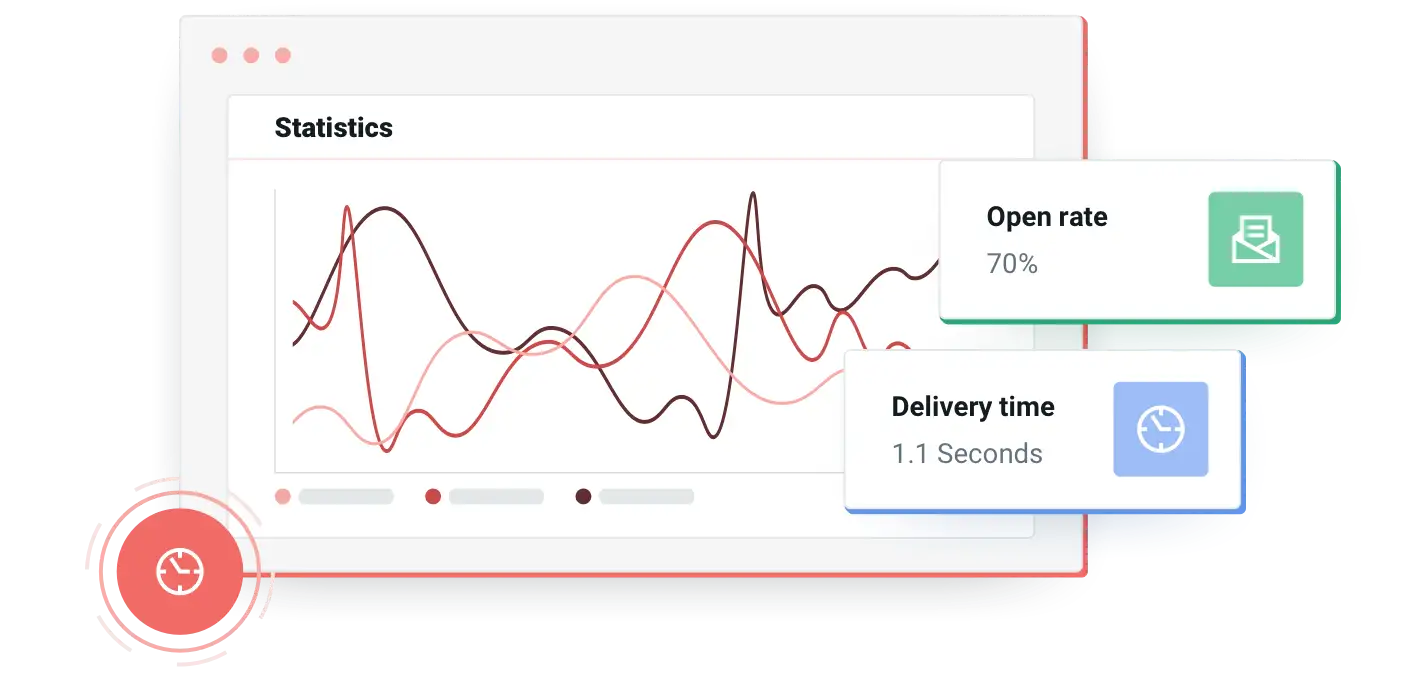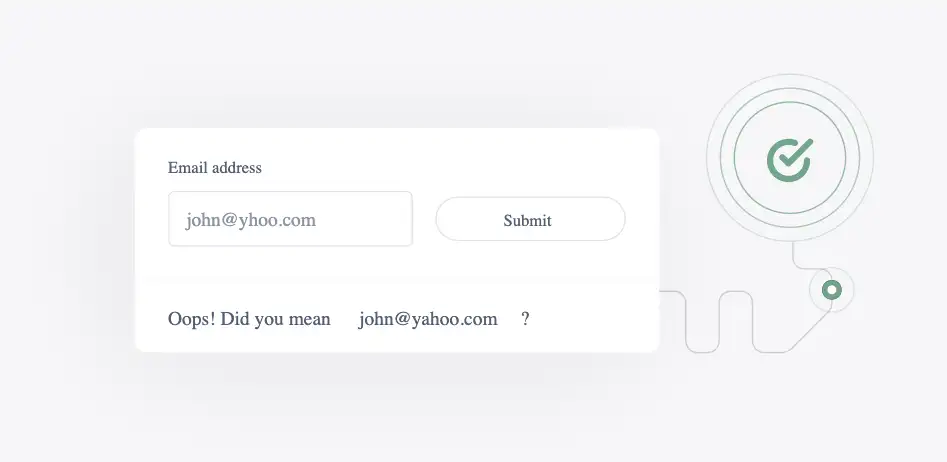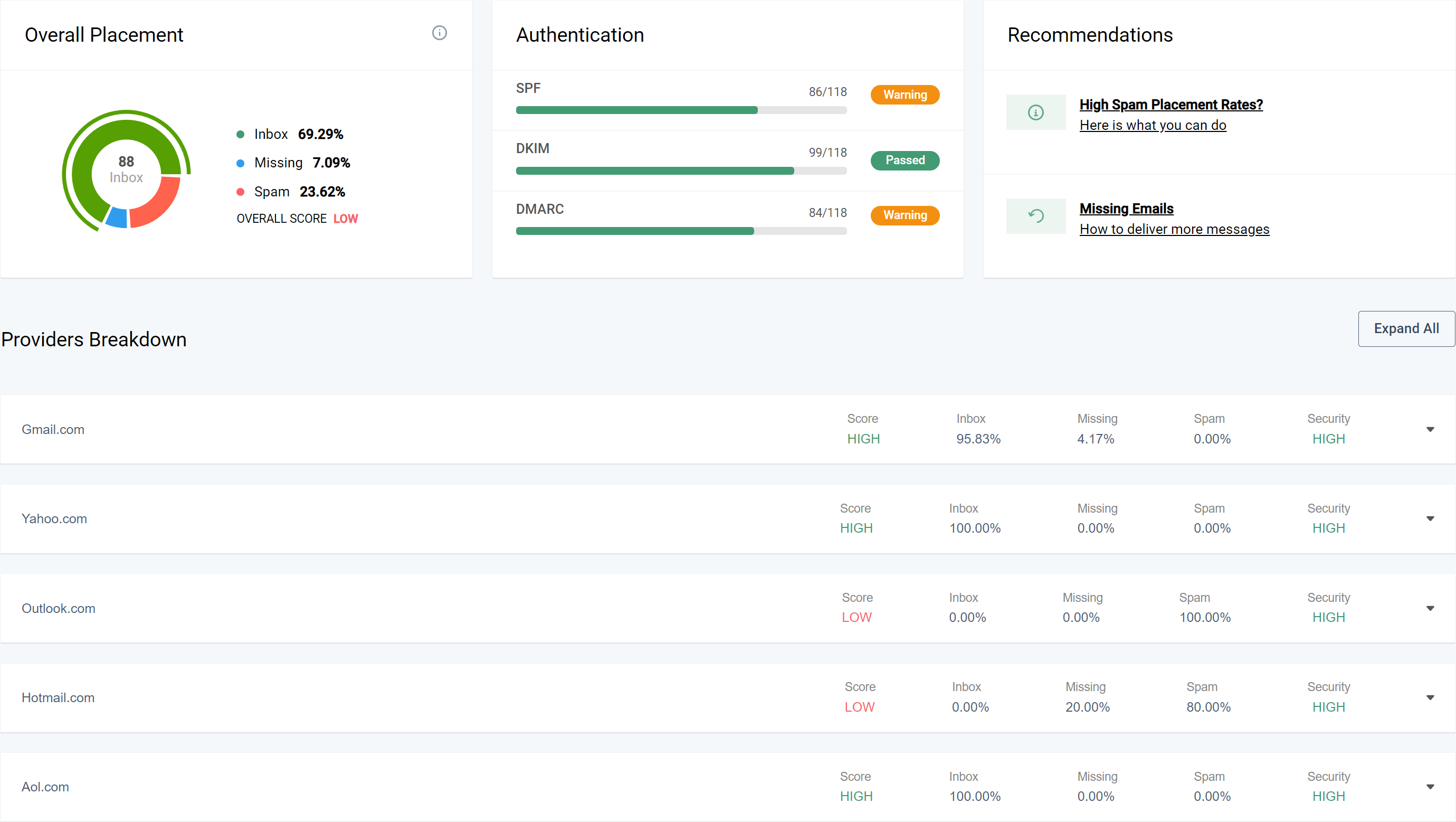Six deliverability strategies to keep you off ISP naughty lists this holiday season
Deliverability matters year-round but Black Friday kicks off a competitive season where your ability to land in the inbox is challenged by additional factors. If your concerned with staying off naughty lists and spam lists, then you need these six tested strategies from our deliverability experts.
PUBLISHED ON
Old Kris Kringle’s not the only one who makes a list and checks it twice. ISPs are notoriously scrupled when it comes to evaluating senders on their way to the inbox.
While the holiday season is great for increased traffic and sales, it’s also ideal for increased sending and spam emails. To succeed, you need a strong deliverability strategy, but deliverability is not a switch you can flip for instant results.
So, warm your IPs by the fire and let us guide you to a successful season with six steps to deliverability success.
Table of content
Email is still the reigning holiday champ
Step one: Create intentional content
Step two: Segment based on engagement
Step three: Establish your sending frequency
Step four: Preview and test your email rendering
Step five: Clean your list with email validations
Step six: Conduct a seed test
Why is a strong deliverability strategy even more important during the holiday season?
Black Friday is a holiday spending catalyst. On this day, sending increases significantly across all of ecommerce but it doesn’t just drop off after the weekend, or even after Cyber Monday (BFCM).
When compared to other times of year (in the graph below), we found that Black Friday email volume is 65% higher than an average weekday in June, and total email volume for 30 days (beginning on Black Friday) was 35% higher than a 30-day period in June.

Deliverability is your ability to land in your customers’ inbox, but what you send isn’t the only thing that matters. Holiday sending doesn’t just spike for 24 hours – it’s a sustained increase over a greater period. This means that your holiday-sending strategy can’t be packed into a single weekend. And because of the increase in sustained traffic, you want to be particularly careful how your emails are being received by ISPs.
Email is still the reigning holiday champ
In a 2023 consumer survey we conducted, we found that more than two-thirds of consumers (68.9%) prefer email when t comes to getting their BFCM promotions. But promotional emails aren’t the only important peak sending communications. Transactional messages are critical, according to 80.4% of surveyed consumers. Why? Transactional messages contain important purchase information, shipping confirmations, and time-sensitive updates.

How to stay off ISPs naughty lists this holiday season
The Black Friday spike is the sugar-rush that kicks off the hyper-active holiday sending season. And with both promotional and transactional messages at play and at risk, there are many angles to how you need to think about deliverability, seasonal challenges, and how to overcome them. So, what questions are top of our minds this year?
What can you do to avoid being sent to the spam folder?
How do you achieve your desired inbox placement?
How do you ensure your message is seen as intended across devices?
What kind of content will increase your conversions?
Inbox service providers are not consistent. Across providers, there are different hurdles and hoops to jump through to land, not just in the inbox, but in the primary inbox. Deliverability is about more than getting in, it’s about where in the inbox you land. Of course, deciphering how different ISPs filter and regulate their message distribution is often more art than science.
Let's talk about how you build your strategy.
Are you ready to send? Well, before you focus on holiday deliverability, you’ll want to:
- Check your email authentication setup.
- Make sure you’ve warmed your Domain/IPs.
Step one: Create intentional content
Decide what to send.
The goal is not to inundate inboxes with content – especially at a time of year when users can be desensitized to subject lines with attractive deals and sales. In a sea of emails, content and creativity stand out. Focus on developing meaningful campaigns rather than trying to win the award for most emails shipped.
What is meaningful content? Meaningful content is relevant and personal. That can vary depending on your motive for sending, but during Black Friday the most meaningful things you have to convey are likely the products and services you are promoting.
When developing your content, we recommend keeping it brief and considering features like advanced personalization, segmentation, and AMP emails. AMP doesn't just make your emails interactive but also eliminates the need for users to navigate to another page. We’ve found that approaches like this can increase conversion rates to 41%.
Remember, you have limited time and space to convince a user to engage. When competing in the inbox, maximize all your real estate – from your subject line, to your email body, to a branded sender image.
If you like the idea of including a sender image with your message, you’ll need BIMI certification. And for that you need DMARC. Check out our guide for in-depth information on these and other email securities that can boost your deliverability.
Step two: Segment based on engagement
Here’s a scenario: You work for a non-profit and once a year during the holiday season you ask for donations. Over the past few years, you’ve collected a list of 1 million subscribers. The CEO walks in and says those three cringy words “send to all”. Logically, you might think that sending to your entire list would yield the highest reach, and therefore bring in the most donations.
Let’s walk through why this is a bad idea:
Inactive contacts aren’t the best people to reach out to. If you have a large list of contacts that hasn’t been verified, you can expect a high number of bounces.
Contacts that subscribed over a year ago may no longer be interested in receiving mail from you – especially if you are an infrequent sender, and these people are highly likely to flag you as spam which hurts your sender reputation.
During the holiday season, look at how different recipients engage with your emails and segment your lists based on the level of engagement contacts have shown throughout the year. Avoid emailing inactive contacts and those that haven’t interacted with your messages in a while and send more emails to those that often open and click on your emails.
Instead of emailing everyone in your database, you can optimize your email lists by creating a sunset policy for inactive or low-engagers and using signal boosting practices to send more to engaged users to keep them interested.
Step three: Establish your sending frequency
Once you’ve got your content and your lists established, the next step is figuring out how often to send. Finding the Goldilocks sending zone isn’t always easy, especially around peak volume times like Black Friday or Cyber Monday. And that “just right” temperature is also affected by the sending frequencies and volumes of other senders. When you’re trying to get a user to open your message, you have to ask yourself, what frequency gets you in the zone?
People receive many emails throughout the holiday season. When it comes to sending, a good place to start is to look at your deliverability metrics from last year and check out your open rates. If you’re not happy with the metrics, look at how often you sent holiday campaigns. Did you significantly increase sending around the holiday season? If so, consider reducing that number to be more aligned with your normal sending patterns.

The other factor to consider is volume. If you have ten thousand emails on your list but you don’t usually send to all of them at once, then ramping up to that full volume right away could hurt you. Any time you increase volume, prep in advance. Gradual increase helps deliverability.
Engagement has a huge impact on deliverability and a lot of research goes into observing how often users check their inboxes, and what times are most optimal for sending. We find that a lot of campaigns go out exactly at the top of the hour, e.g., 9 AM but consider this: If a great number of companies all send at 9am, ISPs will hold back messages to manage the volume and your delivery may be delayed. If you’re concerned about when your message arrives, try sending on a slightly off time, like 9:17 AM.
Not sure when to send? Find your optimal send time based on your user engagement.
Step four: Preview and test your email rendering
Check your appearance before you go out.
Presentation isn’t everything (though the designers may disagree) but it’s critical for your emails to look good across every device type and operating system. Every inbox and device displays emails differently and email preview tools make it possible for you to test your content and make any adjustments before you send your campaigns.
There are other benefits to previewing your emails aside from making sure they look good. Appearance is one side of the coin; optimization is the other. Are your emails optimized for dark mode? Are your links functional? Have you run spell check? All of these questions boil down to grading the quality of your email so you don’t send anything that could impact your brand or reputation.
When we’re talking about the holiday season, previewing your messages is even more critical, as the messages you send will be in competition with over 116 million other emails on Black Friday alone. Users can’t engage with emails they don’t receive and they’re also likely to click away from emails that don’t render properly.
Step five: Clean your list with email validations
One of the most critical elements of deliverability is a well-curated list. ‘Tis the season now, but remember – deciding if you’re naughty or nice factors in an entire year of behavior, and this isn’t a bad approach to carry over to your email address list.
Mailgun’s email validations tool evaluates your list and catches typos, non-existent mailboxes, disposable email addresses, and other list inconsistencies by evaluating them against our extensive database for validation and engagement.
Validating the emails on your list before sending your holiday email campaigns is essential, but it’s also a maintenance action to carry out throughout the whole year. There are things you can do from the point of email collection to make sure users are intending to subscribe and engage with your company.
Double opt-ins can be implemented to add an additional step to the user’s subscription process like a captcha or email confirmation step. Is this more work for your users? Maybe a little. But it’s a great way to build a list that will have significantly higher engagement rates with less risk of your messages being marked as spam.
Protect your lists by implementing double opt-ins, but also by using tools like Mailgun’s email validation API to add typo detection into form fields.

Step six: Conduct a seed test
Seed testing is like a dress rehearsal. It involves sending your campaign to addresses on a seed list – a list of test email addresses used for monitoring where messages land in the inbox – and using the test to catch issues and solve problems, so your campaign content goes out as intended and doesn’t trigger spam filters.

Seed testing also helps with inbox placement by providing visibility into your authentication, provider scores, and where in the inbox your emails land. Some inboxes filter messages based on whether it reads them as legitimate messages or commercial offers. During a high-volume day like Black Friday, seed testing can help you land front and center – in the primary inbox.
This year’s sending can help next year’s deliverability
Deliverability is a hot topic around the holidays but building a successful deliverability strategy is an ongoing process and can sometimes feel like a black hole. Tracking your metrics from this year can give you great insights into your deliverability strategies for peak sending times in the future. For extra help, check out what Greg Zakowicz, Omnisend’s Sr. Ecommerce Expert had to say about Black Friday deliverability strategies in this years Email Camp: Mission Control.
Deliverability is a complex topic to wrap your mind around — sort of like trying to put wrapping paper over an unboxed bicycle — a lot of gears and spokes to cover. At Mailgun we’re so passionate about deliverability we dream about it all year round. If you found this information helpful but still need more, check out our email deliverability tools and services.







